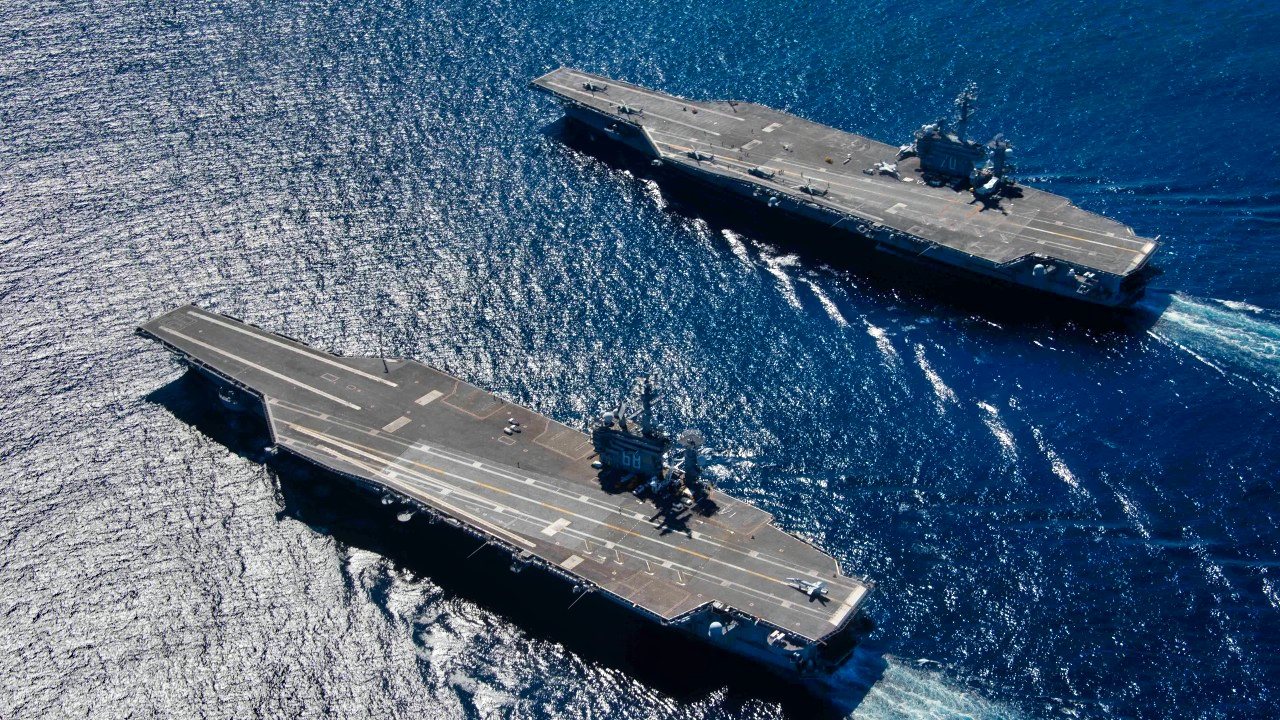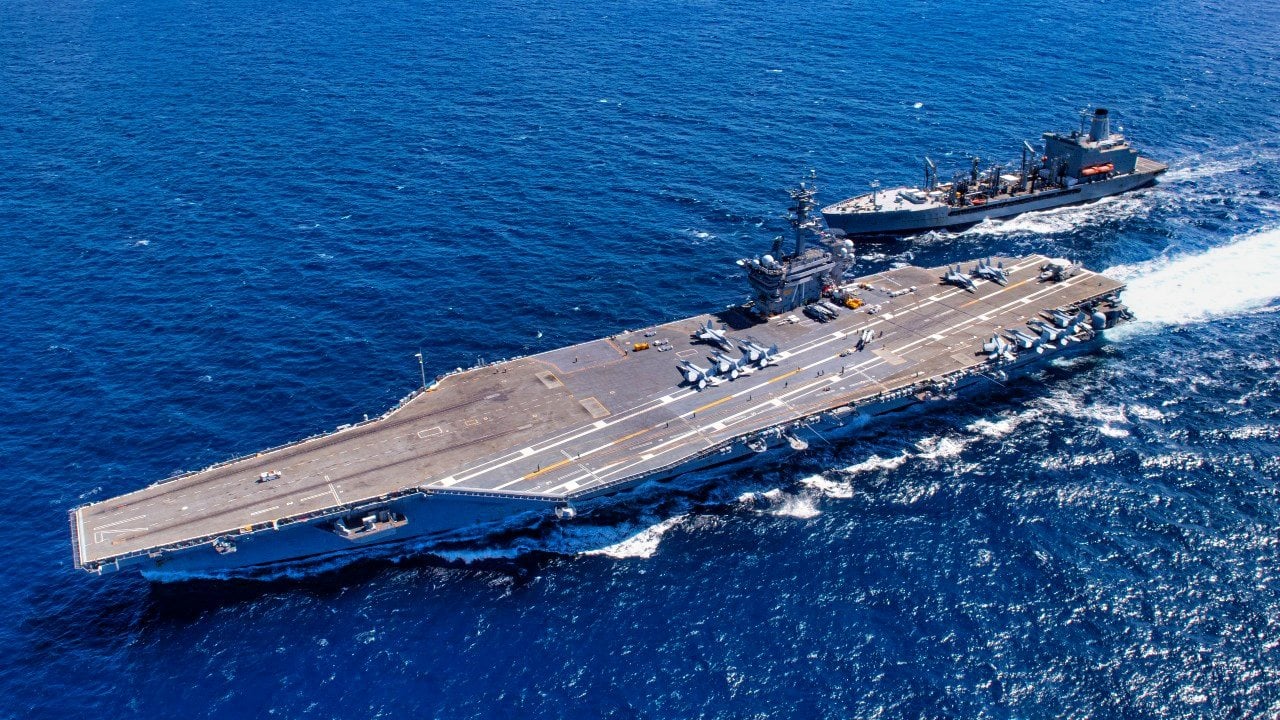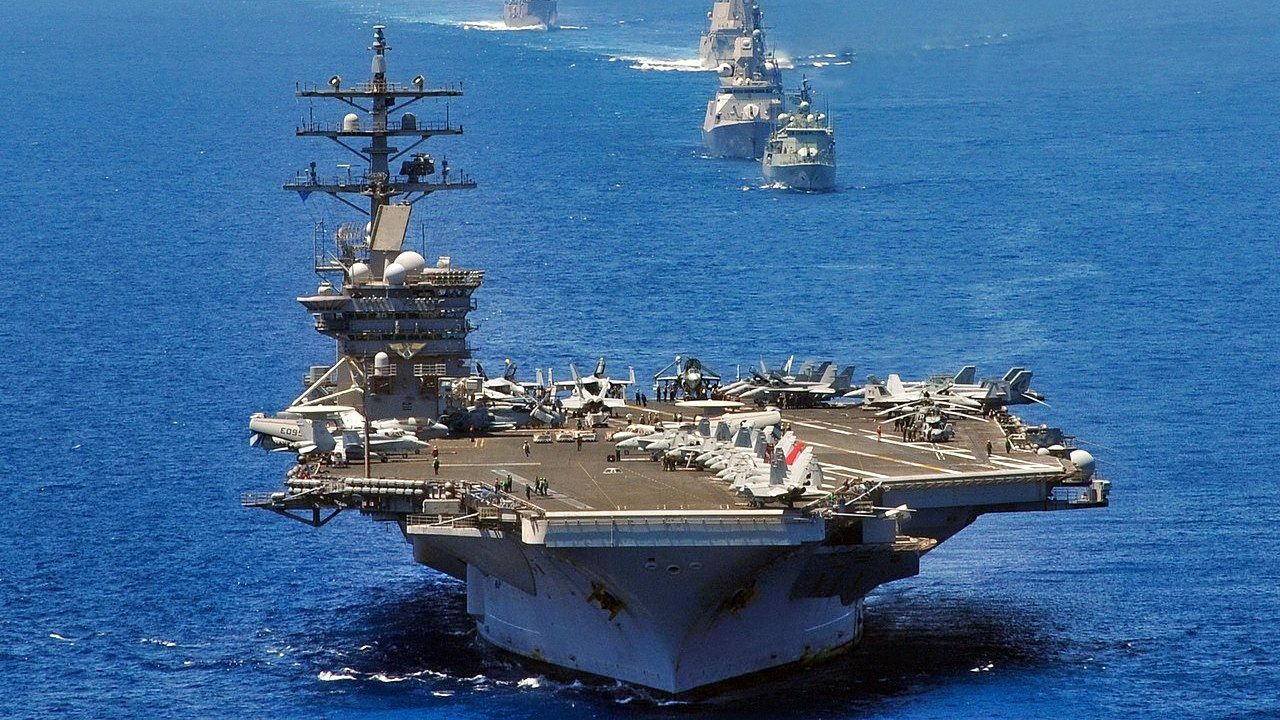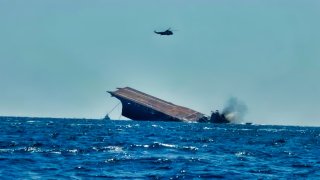19 Warships, Including a Navy Aircraft Carrier, Were 'Sunk' in 10 Minutes
In 2002, a U.S. military simulation called Millennium Challenge 2002 exposed vulnerabilities in the Navy’s carrier strike groups, as retired Marine Lt. Gen. Paul Van Riper, playing the enemy, used unorthodox tactics to “sink” 19 American warships, including an aircraft carrier, within minutes.
What You Need to Know: In 2002, a U.S. military simulation called Millennium Challenge 2002 exposed vulnerabilities in the Navy’s carrier strike groups, as retired Marine Lt. Gen. Paul Van Riper, playing the enemy, used unorthodox tactics to “sink” 19 American warships, including an aircraft carrier, within minutes.

-Van Riper’s creative strategies, like missile attacks from commercial ships, highlighted weaknesses in the U.S. Navy’s response to asymmetric threats. The Navy’s reaction was to reset the exercise and impose restrictions, limiting the “enemy” tactics.
-Though rarely discussed, the simulation served as a critical reminder that traditional defenses may be inadequate against adaptive, unconventional threats.
Millennium Challenge 2002: How 19 U.S. Warships Were "Sunk" in Minutes
On several occasions, fairly "low-tech" diesel-electric submarines have bested the United States Navy's most advanced nuclear-powered supercarriers. Such was the case in 2005 when one of Sweden's Gotland-class submarines "sank" the Nimitz-class carrier USS Ronald Reagan (CVN-76) during an exercise in the Pacific Ocean.
It was an incident that reportedly shocked some U.S. Navy officials; however, it was far from the worst "naval disaster" the sea service experienced in a combat simulation.
Three years earlier, the U.S. Navy saw 19 of its warships, including an aircraft carrier destroyed and sunk – and all within 10 minutes. The U.S. flotilla was attacked and "overwhelmed" by missiles launched from commercial ships and radio-silent aircraft. Unlike the exercise with the Swedish submarine and CVN-76, that embarrassing incident was all played out in a simulation.
As reported by The Washington Post on Wednesday, the drill in question was part of a $250 million war game dubbed Millennial Challenge 2002 and remained a secret for two decades – apparently because U.S. officials at Joint Forces Command in Norfolk didn't like the outcome. The paper of record even had to Mandatory Declassification Review (MDR) request to obtain information related to the simulation. It found that outside-the-box thinking was employed, and that didn't sit so well with the brass.

"We looked for their weakness and put our strength against it," Lt. Gen. Paul Van Riper, USMC (Retired), author of the after-action report and commander of the enemy forces during the war game, told The Washington Post.
Playing as the commander of an enemy force, Van Riper succeeded in destroying an American carrier strike group (CSG), but instead of being lauded for bringing to light the vulnerabilities, the Joint Forces Command changed the rules. In addition to imposing limits on the tactics that the enemy could employ, the sunk vessels were "refloated" and the exercise restarted.
As the paper noted, the official final report, which was made public a decade ago, called the war game "a major milestone" and significantly downplayed the loss of the CGS – which was described as "moderately unsuccessful."
Par for the Course
Perhaps someday a movie could be made about this incident, but that's unlikely to happen. Yet, it should be remembered that history is filled with military forward thinkers who don't play by the rules and instead of being commended are chastised.

This was true of men like U.S. Army General Billy Mitchell, who was an advocate of air power. The old guard in the U.S. Navy didn't want to hear it. Even as the sea service adopted aircraft carriers, there was still the opinion that battleships would rule the waves and win the day – then Pearl Harbor showed the vulnerability of battleships to aircraft.
That point was brought home later in the war when U.S. carrier-based aircraft sank the Imperial Japanese Navy's super battleship Yamato.
In more recent history, there have been repeated warnings about how a submarine can sink a carrier, while we saw in the ongoing war in Ukraine that a nation without any navy was able to sink the enemy's flagship with land-based cruise missiles. Moreover, the exercise occurred long before aerial and sea skimming drones were a proven concept.
"The real sad thing," said Van Riper, "is some of the things that we learned were never shared."
That may be true, but the warning signs are increasingly obvious. Perhaps now the U.S. Navy will listen, and understand that it will need to be innovative in its thinking, because General Van Riper likely isn't alone.
Author Experience and Expertise: Peter Suciu
Peter Suciu is a Michigan-based writer. He has contributed to more than four dozen magazines, newspapers, and websites with over 3,200 published pieces over a twenty-year career in journalism. He regularly writes about military hardware, firearms history, cybersecurity, politics, and international affairs. Peter is also a Contributing Writer for Forbes and Clearance Jobs. You can follow him on Twitter: @PeterSuciu. You can email the author: [email protected].
Image Credit: Creative Commons and/or Shutterstock.


